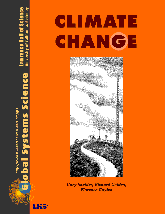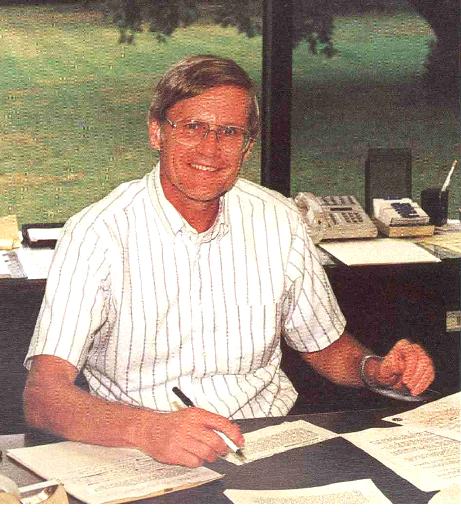CC9.1. Congressional Hearing, 1993

{ Climate Change Contents } { All GSS Books }
In November 1993, a Congressional hearing was conducted to consider the president’s plan. The people asking questions are members of Congress—not scientists. They ask and expect the scientists to give them answers they can understand. Although this material is now more historical in nature, the questions raised by non-scientists are surprisingly persistent even into the first decades of the 21st century. Likewise, actions similar or identical to the elements of the Climate Change Action Plan have been under discussion well into the 21st century as well. Here are excerpts from that hearing.
U.S. House of Representatives
One Hundred Third Congress
Tuesday, November 16, 1993.

David Minge, U.S. Representative from Minnesota
MINGE: I guess I’m always somewhat of a skeptic of things, and I recall that about 30 years ago there were articles that were appearing from various scholars indicating that we were going to have a return to the Ice Age, and one would be probably well advised not to invest in Canadian or North Dakota farmland because who knew how long it would be before the ice would return. And I’m interested that now we’re talking about global warming. To what extent can you say that there’s clearly a consensus in the scientific community that global warming is what is occurring and that we are not simply experiencing a shift in climate that is of a temporary duration and a decade from now we’ll be talking about the Ice Age again?

Jerry Mahlman, director, Geophysical Fluid Dynamics Laboratory, National Oceanic Atmospheric Administration, Princeton, N.J.
MAHLMAN: In the early seventies, there was a great deal of press attention to the comments of a few that we have to be prepared for the onset of the next Ice Age. Many neglected to point out that would be on the order of 5 to 15 thousand years from now, and the press gave it a lot of attention, to the bewilderment of many of us, because by that time, in 1967, the fundamentals of the greenhouse effect had been calculated, by first principles, and many of us were already concerned about this problem at that time.
So I think that the reminiscence about Ice Age apocalyptic statements is really kind of what actually happened at that time. So, to me, the issue remains that we have to think about global warming on the shorter time scale, namely, over the next century.
You asked the question about the virtually one degree Fahrenheit global mean surface increase we’ve seen over the past century: is that unambiguously attributable to the greenhouse effect? I think the honest answer is it’s quite likely that it is so, but what we do not know is whether or not the one degree Fahrenheit warming is due, and only due, to greenhouse warming. We do know that the climate fluctuates naturally, as you quite properly pointed out. The evidence suggests that one degree Fahrenheit variation over a century is clearly at the outer limits of what we would expect in natural fluctuation of climate to do without being forced by something, greenhouse gases or changed solar constant, or whatever.
So I’ve sometimes said that if it were a civil court case, the global mean temperature record would probably be convicted on the basis of preponderance of evidence. If it were a criminal court case, I could visualize a hung jury with eleven saying yes and one saying no.

MINGE: Are there credible or respected scientists or academicians that disagree with the global warming hypothesis or theory that we’re discussing this morning?
MAHLMAN: There is essentially no one who disagrees with the global warming hypothesis. It is foolish to do so and none of the credible scientists are that foolish, in the sense that we do know that if you increase carbon dioxide in the atmosphere, you increase the ability of the gas, the atmospheric gas, to absorb radiation and that produces a warming effect.
All of the controversy, all of the arguments, is: how does that warming effect play out in the climate system? There have been skeptics who have said that they’re not sure that the models are correct—an appropriate skepticism, I might add—and they have been seeking contrary hypotheses that, in effect, could make it go away.
And the trouble with those hypotheses is that they’re depending on mechanisms to cancel out another mechanism. It’s a bit like trying to cure a hot foot by putting a bag of ice on your head; on the average you might not change your temperature, but something else happens when the system is trying to adjust itself. So that even the more noted skeptics realize that some of their contrary hypotheses, if carried out, would also be indicative of substantial changes in the climate system. In other words, the system, to avoid responding the way that the greenhouse theories say, would have do something else very tricky and effect a climate change in itself, in my personal opinion.

CHAIRMAN: Thank you, Dr. Mahlman . . . Now we’ll hear from Dr. Susan Tierney, Assistant Secretary for Policy, Planning, and Evaluation at the U.S. Department of Energy.
TIERNEY: Let me start with the Administration’s overview. First, we think this plan is a robust, credible plan. It is the most specific plan that has been prepared to date by any country in the world. We are pleased that it meets the President’s commitment to reduce the country’s greenhouse gas emissions to their 1990 level by the year 2000.
It has been no small achievement to figure out how to do that. Without the Climate Change Action Plan, emissions of the major greenhouse gases (carbon dioxide, methane, nitrous oxides, and hydrofluorocarbons) are projected to grow by about 7 percent between 1990 and 2000.
The plan will attain the emission reduction goal by implementing nearly 50 specific actions that touch every sector of the economy. It leverages a modest government expenditure—about $1.9 billion between 1994 and 2000—which stimulates over $60 billion over the same period in private sector investment in energy efficiency, renewable energy, and other technologies that help reduce greenhouse gas emissions. These investments, in turn, pay substantial dividends to consumers and firms in the form of reduced energy costs—over $60 billion in reduced costs between 1994 and 2000, with continuing cost savings of over $200 billion between 2001 and 2010.
These energy efficiency improvements are especially cost-effective methods to reduce greenhouse gas emissions—in fact, most of the emission reductions in the plan can be achieved at a profit for U.S. firms and consumers.
For example, the plan will allow workers the option of taking either employer-paid parking or its cash value as increased income instead—providing a financial incentive to take public transportation or car pool.
Through this plan, the United States will aggressively promote more recycling, more efficient transportation systems, more reductions in harmful methane emissions from mining and agriculture. The plan protects forest resources that store carbon taken from the atmosphere. And it establishes a program to monitor the results of the plan and modify it if necessary to adapt to changing circumstances.
The entire transcript is available from the U.S. Government Printing Office and from large libraries.
QUESTION 9.1.1.
How would you judge the scientists’ answers?
Can you summarize, in your own words, what each scientist is saying?

